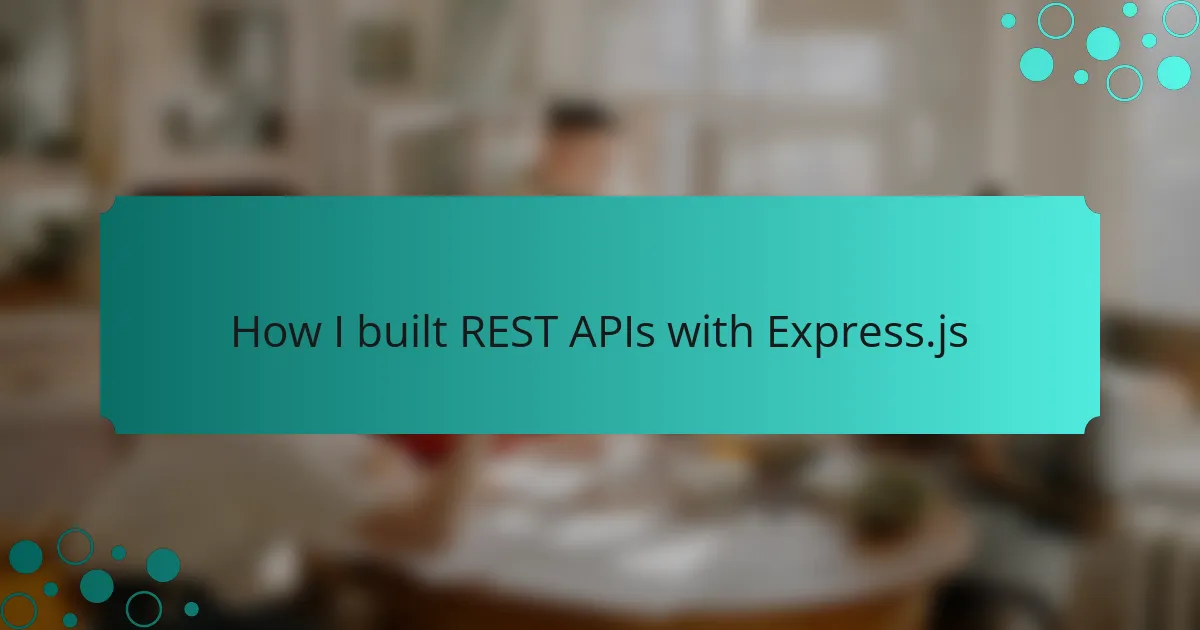Key takeaways
- Understanding REST APIs involves mastering methods like GET, POST, PUT, DELETE, and PATCH for effective client-server communication.
- Express.js offers simplicity and flexibility, making API development easier with features like routing, middleware support, and a strong community.
- Setting up a solid development environment with tools like Node.js, Postman, and Insomnia is essential for building efficient REST APIs.
- Data validation using middleware such as express-validator significantly enhances API robustness and improves user experience by catching errors early.
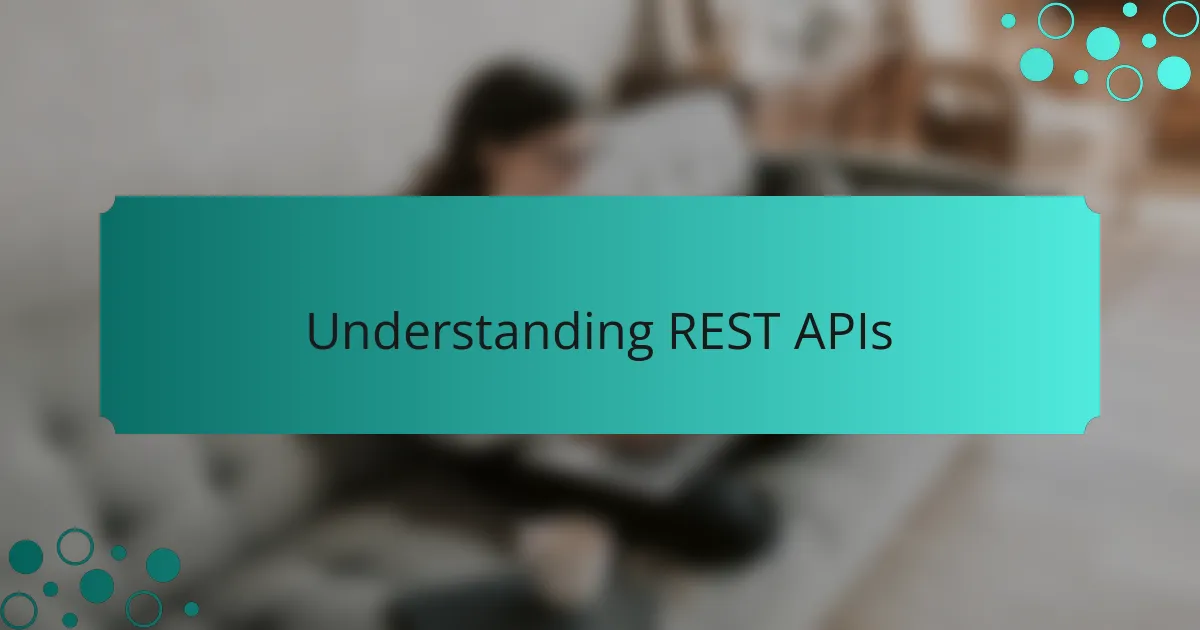
Understanding REST APIs
Understanding REST APIs is essential for anyone looking to build robust web applications. REST, or Representational State Transfer, is a set of architectural principles that make it easy to communicate between a client and a server. I remember the moment I first grasped these concepts; it felt like unlocking a new level of understanding in web development. The clarity of how different parts of an application interact inspired me to dive deeper into building my APIs.
When you’re working with REST APIs, it’s also crucial to remember the common methods used to interact with resources. Here’s a concise list of those methods:
- GET: Retrieve data from the server.
- POST: Send data to the server to create a new resource.
- PUT: Update an existing resource on the server.
- DELETE: Remove a resource from the server.
- PATCH: Partially update a resource.
Each of these methods serves a unique purpose, and mastering them can significantly enhance your API’s functionality. I recall my first attempt at using the POST method; there was a sense of accomplishment when I saw my data successfully created in the database.

Introduction to Express.js
When I first encountered Express.js, I was genuinely fascinated by its simplicity and flexibility. It felt like a breath of fresh air compared to other web frameworks I had used. This minimalist framework allows developers to build robust APIs effortlessly, which really resonated with me during my own journey of learning and developing.
Express.js has quickly become a trusted companion in my programming toolkit. It streamlines the process of creating server-side applications and APIs, allowing me to focus on functionality without getting bogged down by unnecessary complexity. Here are a few key features that make Express.js stand out:
- Simplicity: The straightforward and unopinionated structure allows for easy understanding and implementation.
- Middleware Support: Integrates smoothly with middleware to handle requests and responses effectively.
- Routing: Offers powerful and customizable routing capabilities, making it easy to organize API endpoints.
- Flexible: Can be scaled for small projects and expanded for larger applications without much hassle.
- Active Community: A vibrant community means you can find plenty of resources, plugins, and support when needed.
This blend of efficiency and power is exactly what I appreciate, especially when I am racing against deadlines or experimenting with new ideas.

Setting Up Your Development Environment
Setting up your development environment is a crucial step in building REST APIs with Express.js. I remember when I started, feeling a mix of excitement and nervousness as I configured my workspace for the first time. Ensuring that your environment is ready not only helps in writing better code but also significantly reduces frustration when debugging.
One of the first things you’ll need is Node.js. It installs the Node Package Manager (npm), which is essential for managing project dependencies. From my experience, a clean and organized setup with tools like Postman or Insomnia for testing can make a world of difference.
Here’s a comparison of different setups that can enhance your development productivity:
| Setup | Description |
|---|---|
| Node.js | JavaScript runtime for building server-side applications. |
| Express.js | Web framework for Node.js that simplifies API development. |
| Postman | A tool for testing APIs and managing requests easily. |
| Insomnia | Another tool for API design and testing, preferred by some developers. |
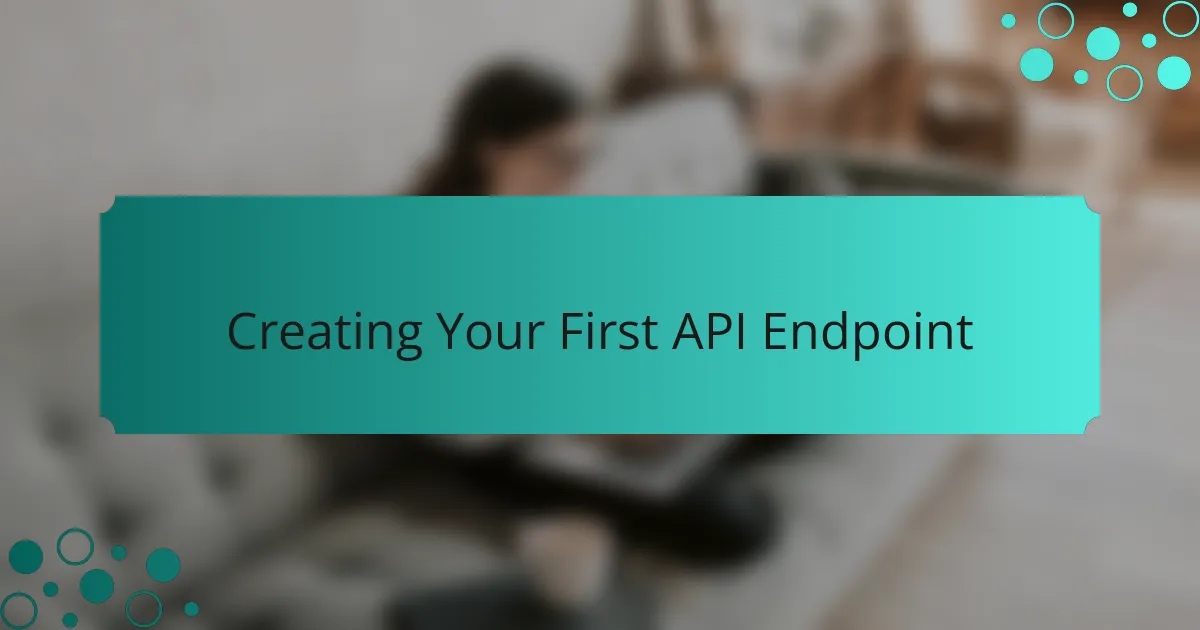
Creating Your First API Endpoint
When I first embarked on creating my API with Express.js, the moment I set up my first endpoint felt like a significant milestone. To create a basic API endpoint, you typically start by defining a route. For instance, a simple GET request at /api/users can return user data. It’s rewarding to see the data come alive after lots of coding and testing.
I remember the thrill of testing that endpoint using Postman. I typed in the URL, hit ‘Send,’ and watched as the response appeared. It was a true “aha” moment for me. You realize, with each successful request and response, just how powerful APIs can be for connecting different parts of an application.
Here’s a quick comparison of various HTTP methods that you might use while building your endpoints:
| Method | Description |
|---|---|
| GET | Retrieves data from the server. |
| POST | Sends new data to the server. |
| PUT | Updates existing data. |
| DELETE | Removes data from the server. |
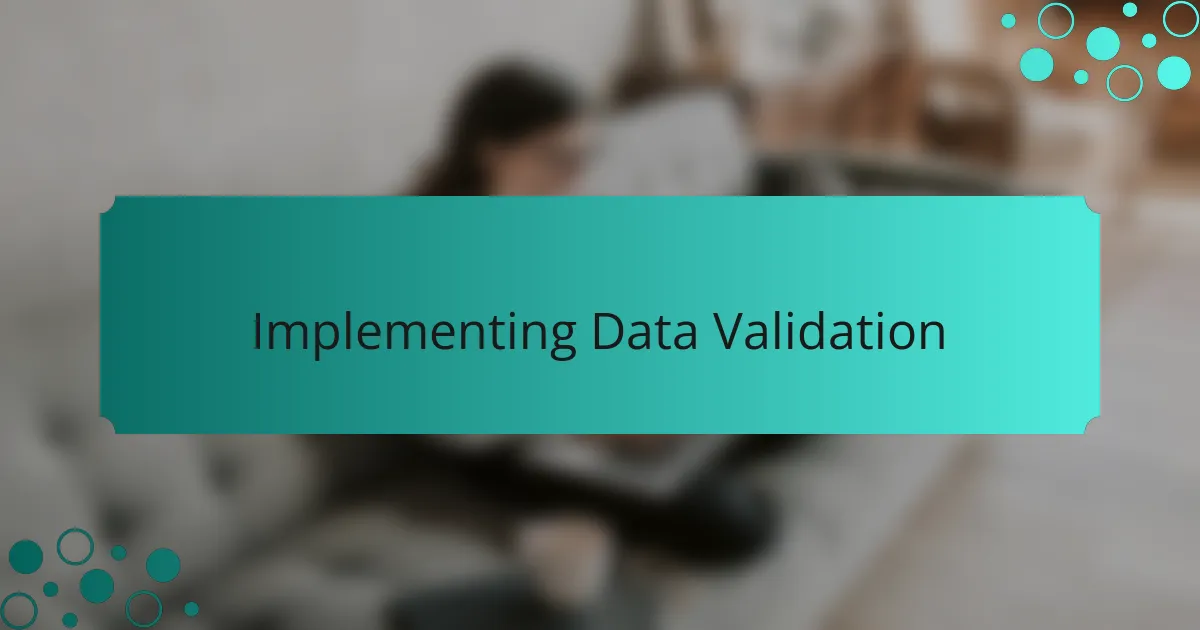
Implementing Data Validation
Data validation is a crucial step in building robust REST APIs. In my experience, implementing data validation not only helps prevent errors but also enhances the user experience by providing feedback when they input incorrect data. I recall a time when a small oversight in data validation led to multiple frustrating errors for users, which taught me the importance of catching these issues early on.
To ensure effective data validation in Express.js, I often leverage middleware, such as the express-validator package. This tool simplifies the process and allows me to define rules for each endpoint easily. Here’s a quick rundown of the key steps for implementing data validation:
- Install
express-validator: Use npm to add the package to your project. - Define Validation Rules: Specify rules for data types, required fields, and format using chainable methods.
- Check Validation Results: Use middleware to check if requests meet the validation criteria, and handle errors appropriately.
- Send Error Messages: Provide clear, descriptive error messages to help users correct their input.
Incorporating these practices has made a noticeable difference in the quality of the APIs I build, creating a better experience for both developers and users alike.
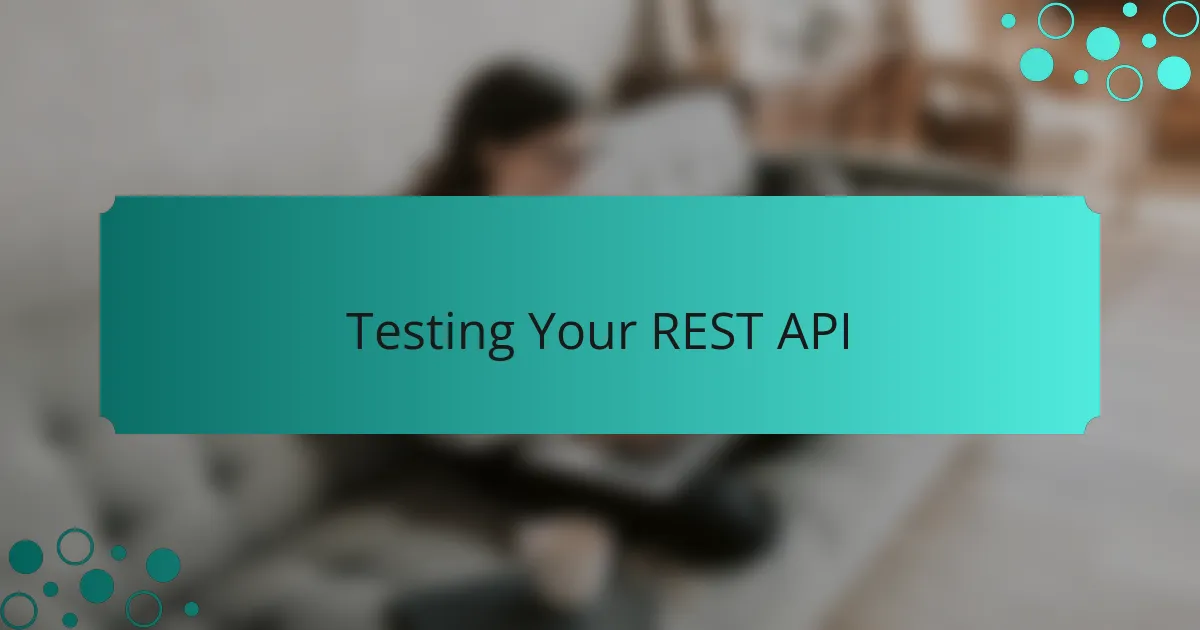
Testing Your REST API
Testing your REST API is crucial for ensuring that your application behaves as expected. I remember the first time I tested an API I built with Express.js; it was both exciting and nerve-wracking to see if all my endpoints worked as intended. Using tools like Postman or automated testing frameworks can save you a lot of headache in the long run; they can catch errors before your users do.
When I started, I often relied on manual testing by sending HTTP requests and checking responses. While this method is manageable for smaller APIs, it quickly becomes unwieldy for larger projects. Eventually, I discovered libraries like Mocha and Chai, which streamlined the process and helped me write maintainable tests.
Here’s a comparison of some popular tools for testing APIs:
| Tool | Type |
|---|---|
| Postman | Manual Testing |
| Mocha | Automated Testing |
| Supertest | Integration Testing |
| Jest | Unit Testing |

Going Beyond Basics with Middleware
When I first dove into building REST APIs with Express.js, middleware felt like a magic ingredient that transformed my applications. It allows you to handle requests in a modular way, enhancing functionality without cluttering your main codebase. For instance, I once implemented a logging middleware that tracked request times—this not only helped in debugging but also provided valuable insights into performance.
Middleware can be categorized broadly into application-level and route-level, each serving unique purposes. Application-level middleware applies to all routes, while route-level targets specific routes, allowing for finer control. In my experience, knowing when to use each type can dramatically improve your API’s structure.
Here’s a quick comparison of application-level and route-level middleware to give you a clearer picture:
| Type | Description |
|---|---|
| Application-Level | Used for all routes; ideal for settings like logging and parsing. |
| Route-Level | Targeted to specific routes; perfect for handling unique cases like authentication. |
